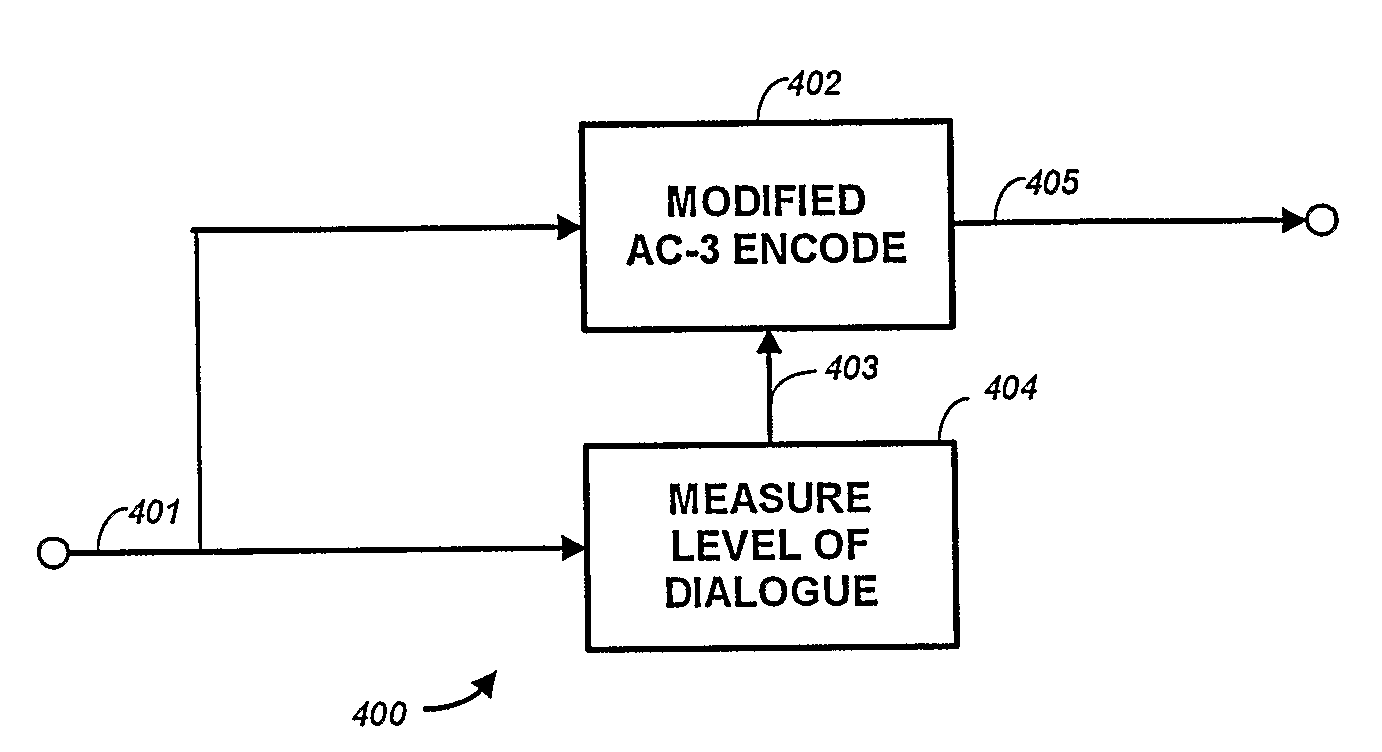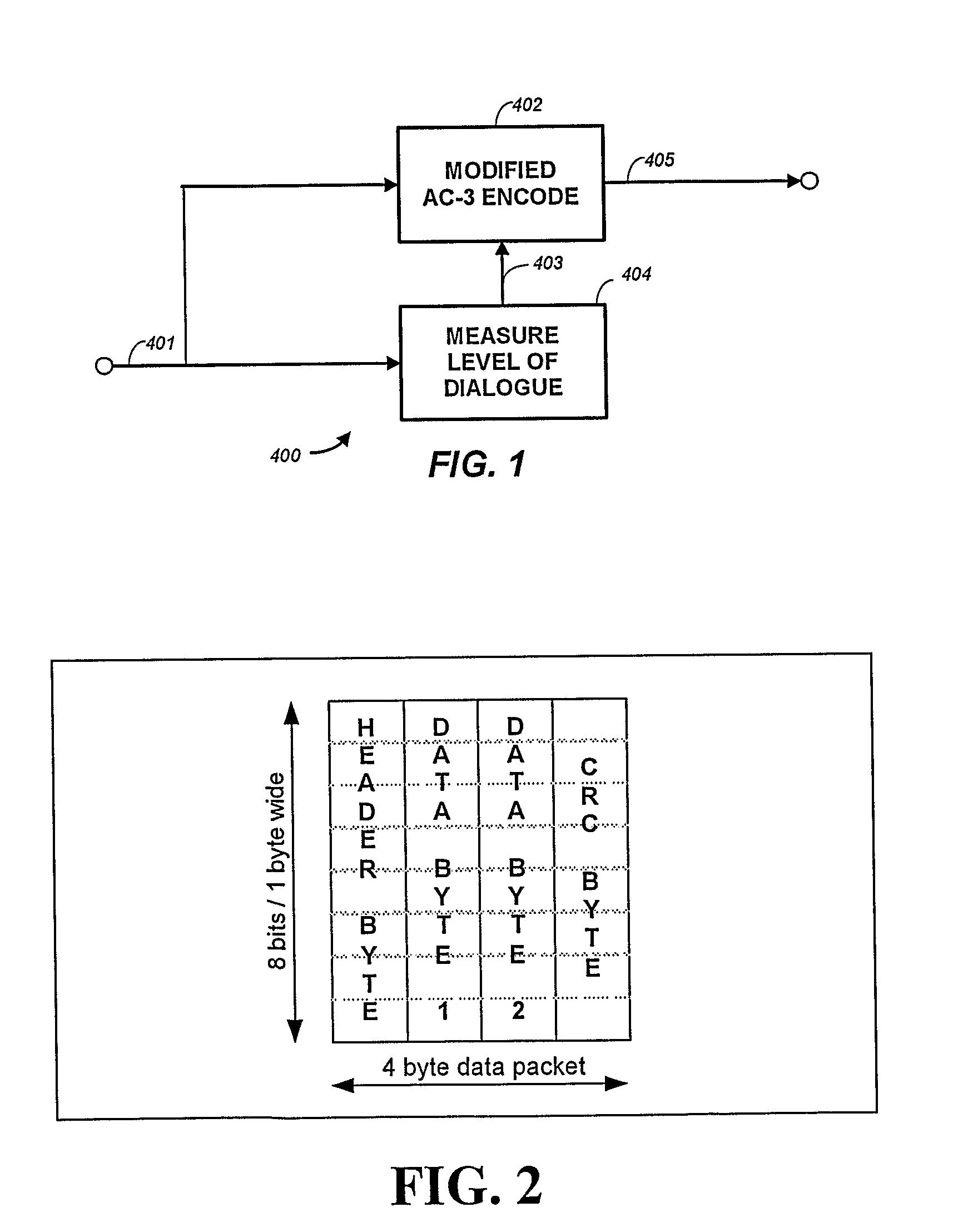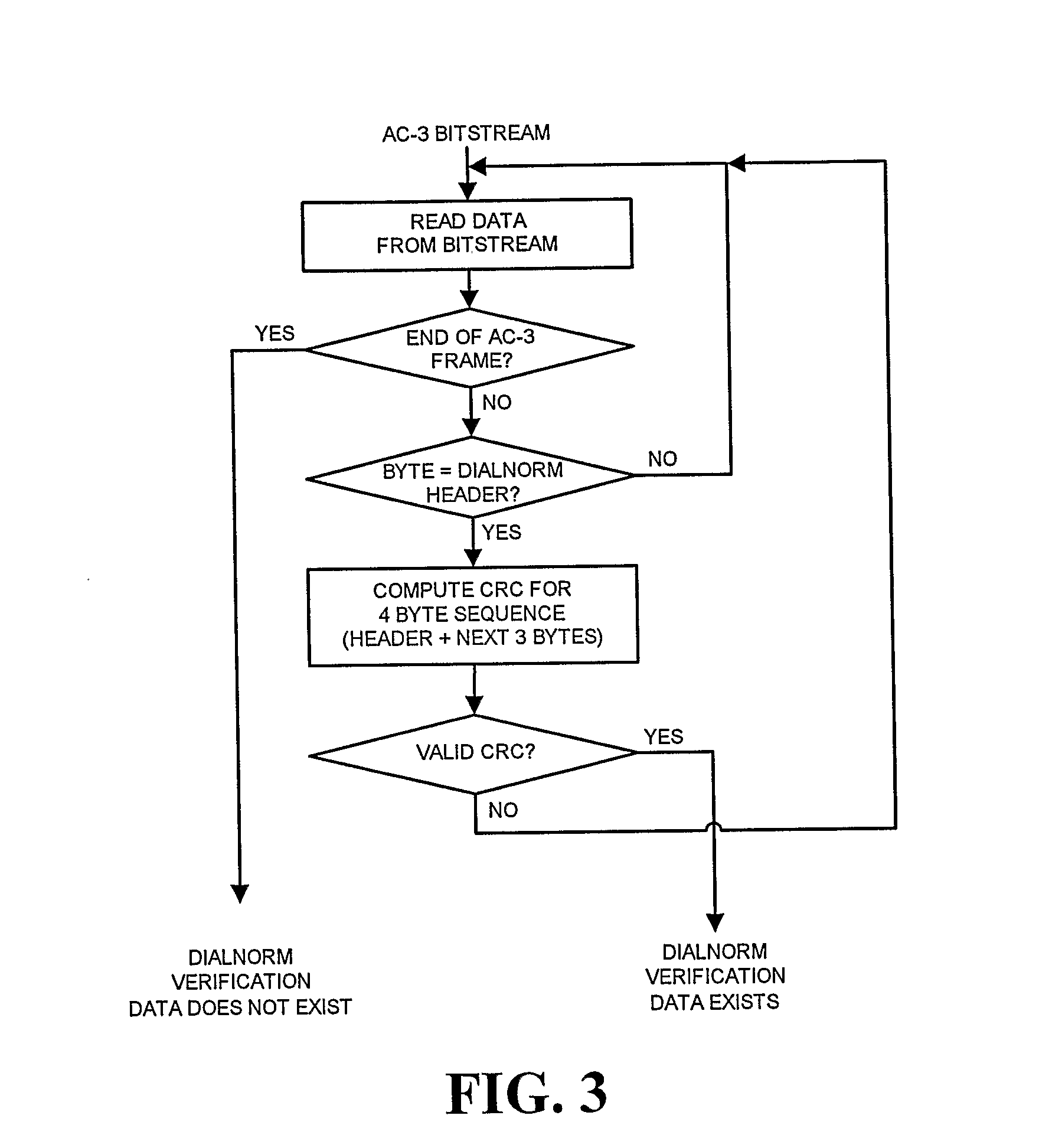Audio Metadata Verification
a technology of metadata verification and audio, applied in the field of audio signal processing, can solve the problems that audio metadata verification information does not serve the function of bit error detection and/or correction, audio metadata verification information does not serve the purpose of bit error detection or correction, etc., to reduce the probability, reduce the likelihood of unused data bits, and preserve backward compatibility
- Summary
- Abstract
- Description
- Claims
- Application Information
AI Technical Summary
Benefits of technology
Problems solved by technology
Method used
Image
Examples
Embodiment Construction
Generating an AC-3 Bitstream that has Correct DIALNORM and Matching Verification Data
[0056]This aspect of the invention relates to creating an AC-3 bitstream that has a correct DIALNORM parameter value and that has matching DIALNORM verification data.
[0057]FIG. 1 shows an arrangement 100 comprising two elements—a modified AC-3 encoding function or a modified AC-3 encoder (“Modified AC-3 Encode”) 102 and a dialogue level measuring function or dialogue level measurer (“Measure Level of Dialogue”) 104. PCM audio 101 is applied to both the Modified AC-3 Encode 102 and the Measure Level of Dialogue 104. The Modified AC-3 Encode may be the same as a standard AC-3 encoder or encoding function except that it is also capable of accepting DIALNORM verification data and inserting it in the AC-3 bitstream in some suitable way, as discussed above. The Modified AC-3 Encode provides a backwards-compatible AC-3 bitstream output that includes DIALNORM verification data. The Measure Level of Dialogue...
PUM
 Login to View More
Login to View More Abstract
Description
Claims
Application Information
 Login to View More
Login to View More - R&D
- Intellectual Property
- Life Sciences
- Materials
- Tech Scout
- Unparalleled Data Quality
- Higher Quality Content
- 60% Fewer Hallucinations
Browse by: Latest US Patents, China's latest patents, Technical Efficacy Thesaurus, Application Domain, Technology Topic, Popular Technical Reports.
© 2025 PatSnap. All rights reserved.Legal|Privacy policy|Modern Slavery Act Transparency Statement|Sitemap|About US| Contact US: help@patsnap.com



